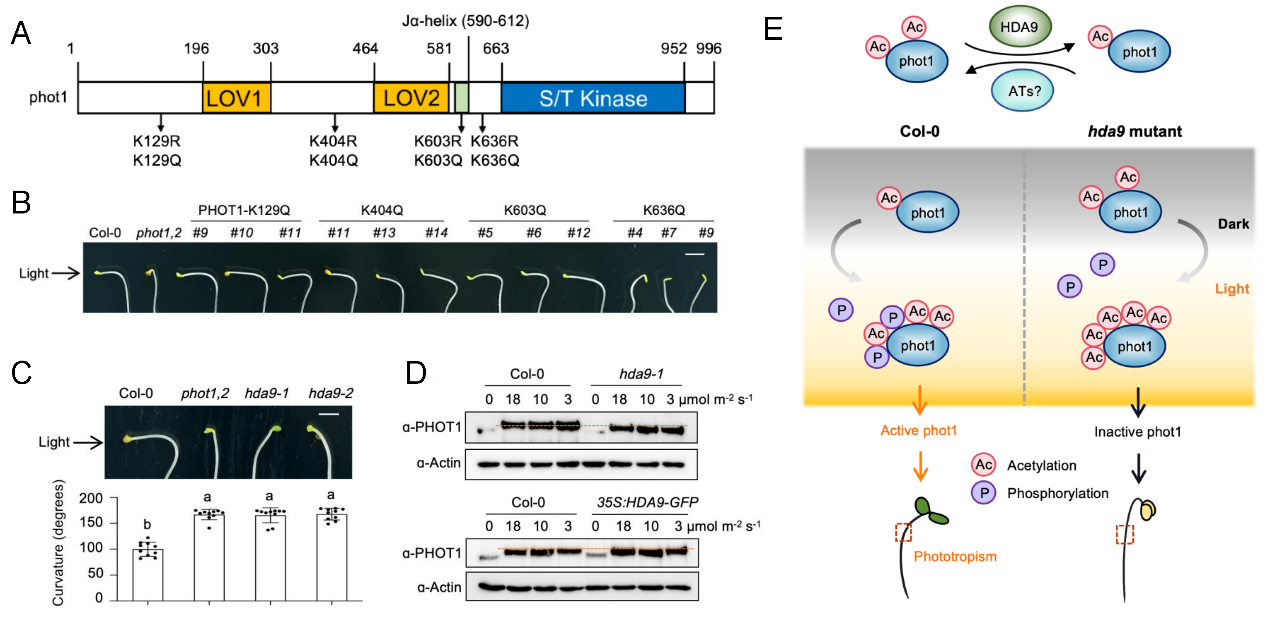
Plant phototropism—directional growth in response to light—serves as a key adaptive mechanism, optimizing photosynthesis and development. Central to this process is phototropin 1 (phot1), a primary blue light photoreceptor that mediates light perception and subsequent phototropic responses. While downstream signaling pathways of phot1 have been well characterized, the upstream regulators of its kinase activity in light responses have remained elusive—until now.
A research team led by Prof. LIU Xuncheng from the South China Botanical Garden of the Chinese Academy of Sciences, has identified a critical regulatory role for acetylation modifications in phot1 function. Their study, published in Plant Communications, reveals that acetylation at multiple lysine residues of phot1, particularly a conserved site (K636), modulates the protein's auto-phosphorylation and kinase activity, directly influencing plant phototropism.
Genetic phenotype screening pinpointed the lysine deacetylase HDA9 as a key player: it regulates phototropism by adjusting phot1's acetylation levels, thereby altering its phosphorylation status and kinase activity. Notably, this "acetylation-phosphorylation cross-regulation" was found to be highly conserved across species including tomato, tobacco, and peanut, underscoring its broad significance in plant phototropic signaling.
The researchers proposed a molecular model linking acetylation to light signaling and phot1 activation: Upon detecting light, phot1 undergoes rapid phosphorylation, activating its signal transduction function but reducing its binding affinity for HDA9. This allows acetylated phot1—likely accumulated via unknown acetyltransferases—to build up, forming a negative feedback loop. By inhibiting excessive phosphorylation of phot1, this loop prevents over-amplification of light signals. The cyclical "acetylation-deacetylation" module thus acts as a precise molecular brake, fine-tuning phototropic signal intensity to ensure optimal growth responses.
This model highlights the precision and plasticity of plant light signal transduction. The findings provide new theoretical groundwork for crop breeding strategies aimed at enhancing light adaptability and efficient energy utilization.
This study was supported by the National Natural Science Foundation of China and the Guangdong Provincial Science and Technology Plan.

HDA9 Mediates Phot1 Acetylation-Phosphorylation Homeostasis to Regulate Plant Phototropism. (Imaged by LIU Xuncheng et al)

86-10-68597521 (day)
86-10-68597289 (night)

52 Sanlihe Rd., Xicheng District,
Beijing, China (100864)

